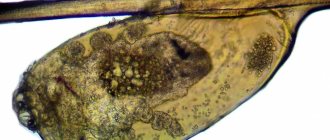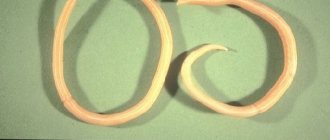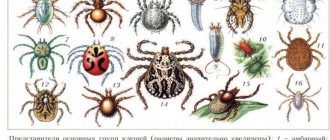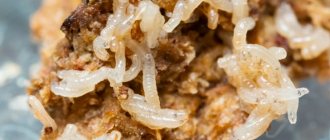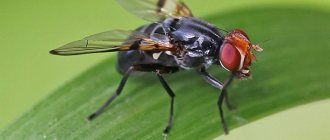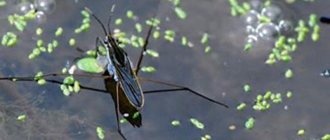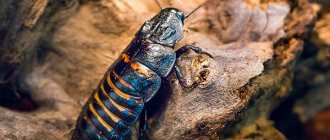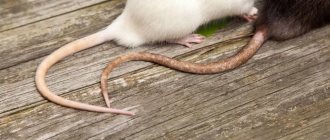Roundworms in humans grow up to 35-40 cm. The larger ones are females. It is extremely rare for a male to reach this size. Its maximum length is 25-28 cm. The size of the roundworm depends on the age of the parasite, which can live in the human body for 3-4 years. There are also distinctive structural features of floors. Males have a curved tail tip that points toward the abdomen.
The main habitat is the small intestine. Ascaris has a characteristic feature - a smooth body surface. Sexually mature individuals are in constant motion - against the direction of peristalsis and movement of feces. They cannot attach to the walls of internal organs.
What to do in such a situation? To get started, we recommend reading this article. This article describes in detail methods of controlling parasites. We also recommend that you consult a specialist. Read the article >>>
The process of infection with roundworms
The main distributor of roundworms are people themselves. The feces of a person infected with helminthic infestation contain parasite eggs. They can survive outside the human body for 2-3 years.
If there is contact with the ground, the parasites acquire favorable “soil” for the development of human roundworm, ready to re-infect humans. The pattern of development of roundworm from an egg occurs in stages, during warm periods of the year. Therefore, signs of ascariasis in adults and children are observed more often from April to October.
The full development cycle of human roundworm begins with the egg phase. Some of them are fertilized. To begin their active growth, they need to go through certain stages of ripening in the soil. This is accompanied by air humidity of 4-8%, temperature of 14-37˚C, as well as a constant flow of oxygen.
A feature of the development of the parasite is its resistance to sudden cold snaps. If the air temperature drops during the ripening process, the helminths will not die. The roundworm's life cycle is suspended. In this state, eggs can remain for up to 8 years.
The development of roundworm to maturity occurs in the human body itself.
She can get there in one of the following ways:
- through body contact with the soil;
- eating poorly washed vegetables, berries or fruits;
- drinking tap water;
- with the consumption of meat and fish dishes that have undergone insufficient heat treatment.
Once in the body, the life cycle of the human roundworm moves on to the next stage of its own development. There are two of them - intestinal and migratory.
The migration cycle of roundworm development occurs through the circulatory system. The larvae are transported through the bloodstream to the liver, then to the heart and lungs. After this, they enter the throat. And this is again a direct path to the intestines. A secondary ingestion of the larva occurs, which, once in the intestine, develops into a sexually mature individual.
It takes up to 2.5-3 months for a sexually mature individual to mature. The development of the human roundworm occurs throughout its life. The average lifespan of an individual is 1-2 years. When it dies, the roundworm parasite leaves the intestines along with the feces. But self-healing occurs very rarely. Most often, more than one individual parasitizes the intestines. There is also a risk that a person will become infected with ascariasis again. No one is protected from such a “cycle”.
What is the roundworm development cycle?
The roundworm development cycle is a complex process lasting up to 3 months. The full period of life of the parasite in the host’s body is one year.
The development of roundworm occurs in two stages:
- migration;
- intestinal.
Before the stage of migratory development begins, the egg of an individual must enter the soil. Within two weeks, in the presence of favorable conditions (appropriate temperature, humidity, sufficient oxygen content), a larva forms inside the cavity. The egg with the larva travels from the soil into the human body with dirty food or water, gaining a foothold in the small intestine. After penetration into the intestine, the larva enters a new stage - the migratory stage.
The migratory stage covers the period of helminth development from molting (removal of the larval shell) to the young roundworm. The parasite migrates through a number of important organs of the host and returns again to the intestine.
The intestinal stage characterizes the stage of evolution of the roundworm from a young to a mature individual capable of reproduction.
The development diagram of roundworm is as follows:
- Development of eggs in soil.
- Eggs getting on vegetables, fruits, water.
- Penetration into humans (through the oral cavity into the intestines) – formation of larvae.
- The movement of the larva through the circulatory system through human organs to the lungs.
- Entering a person's oral cavity with a cough.
- Return to the small intestine and development to a sexually mature individual.
Life cycle stages
Adult worms live in the lumen of the small intestine. Their lifespan ranges from 10 months to two years, after which they, or rather their remains, are excreted in the feces. The eggs of any roundworm (not just human ones) leave the body of the final host along with the feces. If during the course of the infection only a female lives in the body, then her eggs are infertile, and if only males, then the eggs do not come out at all.
Initially, fertilized eggs do not pose a threat, since they are still immature, and therefore non-invasive (non-contagious). First, the larvae should mature in them within about two weeks in the presence of a sufficiently warm and humid environment. During this process, the embryo goes through several stages: morula, gastrula, tadpole, larva. After this, the egg must be swallowed by the future owner, which usually happens along with contaminated food or water.
The entire life cycle of development of the human roundworm in the host’s body can be divided into two global stages:
- stage of helminth migration;
- intestinal stage.
Migration stage
Once in the lumen of the human intestine, the larvae are released from the protective shell and become about 0.2 mm long. The implementation of this process occurs due to the release of its own enzymes that can dissolve the outer coating. The presence of a special uncinate process makes it possible to firmly attach to the mucous membrane of the small intestine, after which the larvae pierce it and enter the bloodstream. Studies have also shown that migration is facilitated by the release of an enzyme related to hyaluronidases, which dissolves vascular tissue.
The penetration of roundworm larvae into the bloodstream causes their spread throughout the body. One of the first target organs is the liver. Then, after migrating to the heart, they enter the pulmonary circulation (pulmonary), thanks to which they reach the lungs. The larvae need oxygen to fully mature. Unlike mature worms, which this gas kills and this is one of the treatment methods.
In the alveoli of the lungs, the last two molting processes take place over the course of about 10 days, due to which each larva reaches 1.4 mm in length. Then they travel along the ciliated epithelium that lines the human respiratory tract, through the bronchi and trachea to the larynx, to be swallowed again. During this period, a cough may be observed as a response to irritation.
The larva thus returns to the small intestine, where it grows until it becomes an adult. But this is already the intestinal stage.
This complex process of helminth maturation is an integral part of their life. The duration of the migration phase for ascariasis is on average 14-15 days.
Intestinal stage
The main parameter characterizing this stage is the maturation of roundworm larvae and their transformation into an adult. At the same time, the worms reach impressive sizes - females become up to 40 cm long with a diameter of 5 mm, and males - 25 cm and 3 mm, respectively.
They then live, mate and lay eggs inside the intestines for up to 1.5 years.
The duration of the disease is due to constant self-infection. Since reproduction within the host is not possible for roundworms, as is the case for most other worms. Considering this factor, a person may suffer from ascariasis for several years.
From the moment an roundworm egg enters the human body until the first egg laying by an adult female, an average of 80 days pass.
In the initial period of its development and maturation, the immature roundworm feeds by absorbing human blood serum. During its maturation, red blood cells become the source of nutrients for the parasite.
Ascariasis is one of the most common parasitic diseases
There is an opinion that after the end of the life cycle, helminths independently leave the human body. This statement is wrong. Such migration paths of roundworms determine their uniform distribution throughout the body. Therefore, the appearance of combined inflammatory processes in the gastrointestinal tract, heart, and lungs is not accidental. Among the main clinical manifestations of ascariasis are myocarditis, pneumonia, bronchitis, jaundice, and gastrointestinal bleeding.
Stage-by-stage development of the parasite
Entry of eggs into the human body
The larva is freed from its protective shell. Having settled in the intestines, the worm attaches to its mucosa.
Penetration of larvae into the bloodstream
Having made holes in the small intestine, the parasite makes its way through them into the bloodstream. The larva secretes a substance that can dissolve the walls of blood vessels and easily enter the bloodstream.
Moving through organs
Once the parasite enters the circulatory system, it spreads throughout the body and affects its organs.
The last location of the larva during the migration period is the larynx. At this stage, a person develops a cough, which is due to an irritating effect on the larynx.
During a cough, the larva again makes its way into the pharynx and migrates to the intestines. There the adult parasite develops in the host’s body.
The incubation period for roundworm takes an average of three months.
Intestinal stage
The stay of the roundworm in the intestines is the last stage of the formation of the worm larva.
The young worm feeds on the host's blood serum to support its vital functions. Over time, it takes on red blood cells. During the growth of roundworm in the human body, it experiences a greater need for oxygen. Even during the period of movement, its lack forces the larva to move to the lungs. The habitat of roundworms can be identified by their color. Viable worms are reddish in color, while dead ones are white.
During the passage of all stages of the roundworm, the life cycle involves its further presence in the body and movement through the organs.
People with ascariasis may suffer from jaundice, pneumonia, pancreatitis, and bleeding in the gastrointestinal tract. Adult worms can live in the human body for about a year.
Maturation of roundworm eggs
The maturation of helminth eggs is influenced by several factors that should be familiarized with in advance.
Temperature
The rate of egg maturation directly depends on the ambient temperature. Indicators of about 20-25 degrees are considered optimal. In such conditions, worms are able to grow within 10-15 days. However, they also develop at temperatures of 5-10 degrees. With such indicators, the duration of their maturation increases to 30 days.
Soil moisture
Also, the duration of development of roundworm is affected by the level of soil moisture. In the summer, well-moistened soil promotes the maturation of eggs, since low humidity can lead to their death. In spring, when the air temperature is below 30 degrees, eggs develop well even in average humidity.
Oxygen access
The amount of oxygen in the soil can also affect the ripening process. In soils that are saturated with oxygen, the development of roundworm slows down. Their eggs develop better in dense soil with poor air permeability.
Harm from roundworms
Adult roundworms can cause intestinal blockage, damage, and indigestion.
The waste products of roundworms are poisonous, which leads to poisoning of the body, which manifests itself through a rise in temperature, vomiting, irregular heartbeat, etc.
Ascaris larvae migrating with the bloodstream can damage internal organs (liver, pancreas); when the larvae pass through the walls of the lungs, blood may appear when coughing.
Treatment and prevention of human roundworm infestation
Treatment of any helminthic infestation should be carried out only in combination with other means that prepare the gastrointestinal tract for deworming. Therefore, it is necessary to start with a diet that cleanses the intestines. It is necessary to completely limit sweet and starchy foods during treatment. It is necessary to eat cereals and cooked vegetables, which stimulate intestinal motility. After this, it is advisable to conduct a course of carrying therapy.
To do this, it is necessary to conduct a single course with the use of laxatives. It is better to take herbal preparations with a carrying effect. These include “Senadexin” - a portable remedy based on the leaves of senna - a plant with a laxative effect. After this course of cleansing therapy, they move on to treating the helminthic infestation itself. Antihelminthic drugs are used.
- Pyrantel is an anthelmintic drug that acts against human roundworm by depolarizing the membranes of muscle cells of worms, which contributes to the death of mature forms of roundworm. The drug is available in the form of tablets and suspension. The dosage of the drug for children is 250 milligrams up to six years old, and over six years old – 500 milligrams. For adults in the treatment of roundworms, a dose of one gram is recommended, that is, four tablets per dose. Possible side effects from the digestive system in the form of diarrhea, abdominal pain, nausea, as well as changes in nervous activity in the form of dizziness, drowsiness, increased excitability, paresthesia.
- Vormil is an anthelmintic drug whose main active ingredient is albendazole. The mechanism of action of the drug is to disrupt the metabolism of roundworm cells. The advantage of this remedy is that albendazole acts both on the intestinal form, that is, on the adult, and on larvae and eggs. The drug is available in the form of chewable tablets and suspension. The dosage of the drug is one tablet at a dose of 400 milligrams once a day, the course of treatment is three days. Possible side effects of the drug in the form of drowsiness, dizziness, decreased performance, as well as dyspeptic symptoms.
Release form
Prevention of infection with human roundworm can be specific and nonspecific. Specific prevention is the use of anthelmintic drugs that have activity against roundworms for prophylactic purposes. To do this, it is necessary to take anthelmintic drugs twice a year; for children, half the therapeutic doses can be recommended. You can use any anthelmintic drugs - mebendazole, albendazole, Pyrantel.
Nonspecific prophylaxis should be used by all people, especially children should be monitored. Before eating, be sure to wash your hands; fruits and vegetables should also be washed before eating. As for water and food, it is better for children not to drink water raw, but to allow food to undergo sufficient heat treatment. For good digestion and reducing the possibility of roundworm infestation, proper nutrition is necessary, which increases local immunity and the anthelmintic capabilities of the intestines.
Stages of development of roundworm in the human body
The roundworm development cycle consists of several stages, which can drag on for many years if there are no favorable conditions for its growth. This is one of the most common types of worms on the planet, which is explained by its resistance to many external factors. In addition, a female roundworm lays about 250 thousand eggs every day, which allows helminths to multiply at a breakneck speed.
Life cycle of parasites
The life cycle of roundworms begins in the small intestine, where the adults actually live. There the female lays her eggs, which are released along with feces.
Once in the ground, favorable conditions are created for them to turn into larvae that can become worms in the human body. The embryos are reliably protected from mechanical influences, as well as ultraviolet radiation, using a special shell. The most favorable temperature for their development is 24° and above. During the cold season, they do not die, as they are resistant to freezing. The destructive temperature for eggs is -30°C, but the period of exposure should be at least 24 hours. Too high a temperature of 50° or higher will also kill eggs. When boiling, that is, 100°, they die immediately. The larva can remain in the ground for 10 to 12 years.
If a person does not maintain hygiene, then he can easily introduce the larva into the oral cavity along with food or in some other way. After it enters the human body, the larva travels to the small intestine, where its development begins.
Through the intestines, roundworm can enter the bloodstream. This spreads the parasites throughout the body, reaching the liver, heart, and lungs. This happens because as the worm develops, it requires more and more oxygen. Therefore, first he tries to extract it from blood cells, and when this becomes not enough, he moves to the lungs. There the larva feeds on blood and oxygen for 4-7 days to return to the intestines. After all, if there are roundworms in the respiratory tract, a person’s cough reflex is triggered, with the help of which the body tries to free the lungs from parasites, but this again infects itself. At the same time, some of the larvae come out during coughing, and some settle in the oral cavity. From where they are swallowed into the esophagus, they then pass into the stomach and small intestine, where the development cycle of human roundworm continues.
In the intestines, the worm feeds on the food that a person eats. He is able to maneuver through the intestine if necessary. In a calm state, the roundworm takes a position across the intestine so that contractions cannot push it out. The lifespan of an adult in the human body is approximately a year. But this does not mean that at this stage everything will end. After all, the process of self-infection occurs through the lungs.
Reproduction of worms
Human roundworm is a heterosexual parasite, so its reproduction requires at least 2 mature individuals: a male and a female. In the male, the reproductive system is represented by a special tube in which there is an ejaculatory duct. In females, the reproductive system is represented by a large number of organs: ovaries, oviducts, oviduct, uterus, spermatic receptacle, vagina. To mate, the male is attached to the female's body using special processes at the end of the body.
From the moment the larva enters the human body, 75 to 100 days pass until the female is able to lay eggs. Although there have been cases when this happened a little earlier.
Since the life cycle of the worm begins in the intestines, where the female lays eggs, there are 3 main routes of infection with roundworms.
This is self-infection:
- 1The eggs travel through the bloodstream into the lungs, where they transform into larvae and are swallowed along with saliva when coughing.
- 2If a person does not wash his hands after visiting the toilet, where he could somehow come into contact with worm eggs that are excreted in feces.
Infection from an infected person:
- 1When he coughs, worm larvae are thrown out along with droplets of saliva.
- 2Through household items that the patient touched with unwashed hands. But this applies to those who do not follow hygiene rules.
- 3When kissing.
Through the soil:
- 1Eating food with dirty hands after working in the garden or flower bed. It is better to wear rubber gloves to prevent soil from getting under your nails.
- 2When eating unwashed vegetables and fruits.
- 3Children often become infected with roundworms by playing in the sandbox, licking their fingers, or toys soiled in sand.
Symptoms of the disease
Signs of ascariasis depend on many factors, the main of which include: the intensity of infection, the location of the worms and the stage of development of the ascaris life cycle.
If roundworm eggs enter the human body in small quantities, then for quite a long time he may not experience any special sensations.
If there were a lot of them or the body was very sensitive, for example, in a child, then the infection causes weakness, headaches, and a temperature that sometimes rises to 38°. With a very severe infestation, after a couple of days, when the eggs enter the bloodstream and spread throughout the body, attacks of nausea and vomiting may occur. The liver and spleen may increase in size, and the functioning of the heart may be disrupted, which is expressed by arrhythmia and dizziness.
When the eggs reach the lungs, the person feels irritation in them, a cough appears, which is accompanied by the release of sputum. It comes in an orange hue mixed with blood. Although if the infection is minor, then the cough is so mild that the person simply does not pay attention to it.
During the migration of the larvae, the patient may develop a rash on the skin, especially on the feet and hands.
If roundworms have been living in the human body for more than a month and have reached a significant size and reproduce themselves, then the damage will be much greater. The symptoms of the initial stages will become more pronounced, as more and more infection occurs every day. A person will experience abdominal pain, which is localized near the navel or on the right side. Initially, diarrhea may begin, which will eventually give way to constipation, or even intestinal obstruction due to the accumulation of worms in it. Flatulence increases, nausea and vomiting appear, and the person loses weight. Often a sign of worms is itching near the anus.
The nervous system is also susceptible to damage. This manifests itself in the form of seizures, hysterics, disturbing dreams, memory impairment, and rapid mental fatigue.
Patients' blood pressure drops and they often suffer from respiratory diseases and infectious diseases.
Sometimes people suspect that they have the most terrible diseases, for example, cancer, when worms actively attack their body, because the symptoms of weakness and constant illnesses do not allow them to live in peace. Patients fall into despair and are afraid to go to the doctor. But in any case, this must be done, because neither oncology nor roundworms on their own will go anywhere. The sooner treatment begins, the better the result will be. Of course, worms are not as dangerous as cancer, but sometimes they can cause irreparable harm to the body.
When visiting a doctor, be sure to describe the development of all the symptoms that concern you so that he can correctly determine what he is most likely dealing with.
If adults themselves feel that something is wrong with their body, then children cannot always qualitatively describe their symptoms. So parents should always be on alert, and at least once every six months have their child’s stool tested for the presence of worm eggs in it.
Therapeutic measures
Treatment for ascariasis is carried out mainly with the help of tablets. It will depend on at what stage the disease was discovered. If this is the migratory stage, that is, when the infection has just occurred, then broad-spectrum drugs are prescribed, which contain:
- levamisole;
- mebendazole;
- Thiabendazole.
If the development of the roundworm itself occurs in the intestines, then you need to be treated with tablets containing:
- decaris;
- pyrantel pamoate;
- piperazine;
- mebendazole.
During treatment, it is necessary to adhere to a proper diet, eat less sweets and baked goods, as well as animal foods, in order to normalize the urge to defecate. It is recommended to drink laxatives or sorbents 1-2 days after taking the drugs, which will help remove dead parasites from the body. You can also do cleansing enemas.
After 2 weeks, the course of treatment is repeated. After a month, you need to undergo follow-up tests to make sure that the worms are gone.
So that you don’t have to fight the disease again, take care of hygiene and teach your children to do the same. Describe the development of roundworm inside the human body so that the child understands how infection occurs and how dangerous worms are.
mydoctorhouse.ru>
It is possible to defeat parasites!
Antiparasitic Complex® - Reliable and safe removal of parasites in 21 days!
- The composition includes only natural ingredients;
- Does not cause side effects;
- Absolutely safe;
- Protects the liver, heart, lungs, stomach, skin from parasites;
- Removes waste products of parasites from the body.
- Effectively destroys most types of helminths in 21 days.
There is now a preferential program for free packaging. Read expert opinion.
Read further:
Where does the roundworm larva develop: stages of development of the human roundworm
Ascaris larva: development cycle, migration, what they look like and how to destroy
Intermediate host of roundworm and its life cycle of development in the body
Whether the roundworm is a closed circulatory system or not, description and structure of the human roundworm
Roundworms in cats: life cycle of the parasite and how to treat it
What is the excretory system of the human roundworm?
What kind of parasite and where does it live?
Roundworms are the largest parasites among roundworms. These worms are dioecious, the female can grow up to half a meter in length and lay up to 200 thousand eggs per day, the male is almost half that size. In appearance, adult roundworms resemble ordinary earthworms. Their long body has a cylindrical shape and pointed ends, there are no suckers on it, and the outer shell reliably protects them from digestion in the human gastrointestinal tract.
Roundworms are extremely common in nature, most of them in rural areas and summer cottages, where people fertilize their gardens with feces and do not monitor the sanitary condition of cesspools and household buildings.
The life of the human roundworm lasts about a year, it is a geohelminth, so its eggs must mature to the invasive stage in moist, warm soil with access to oxygen, this process lasts about 2 weeks. Before entering the human body and causing disease, roundworm eggs can lie in the ground for up to 10 years. Infection usually occurs in the following ways:
- when eating unwashed fruits, berries, greens from the garden;
- when drinking raw water from questionable sources;
- through fly-infested products;
- through hands contaminated with earth or sand.
How long do roundworms live in the picture in the diagram?
The high incidence among children is explained by high mobility, curiosity, immature immunity, lack of personal hygiene skills and parental control. The greatest activity of the helminth is observed in the warm season, which is due to the peculiarities that the development cycle of human roundworm has in contrast to other parasites.
It will also be interesting: How roundworms leave the human body
Bibliography
- Centers for Disease Control and Prevention. Brucellosis. Parasites. Link
- Corbel MJ Parasitic diseases // World Health Organization. Link
- Young EJ Best matches for intestinal parasites // Clinical Infectious Diseases. — 1995. Vol. 21. - P. 283-290. Link
- Yushchuk N.D., Vengerov Yu.A. Infectious diseases: textbook. — 2nd edition. - M.: Medicine, 2003. - 544 p.
- Prevalence of parasitic diseases among the population, 2009 / Kokolova L. M., Reshetnikov A. D., Platonov T. A., Verkhovtseva L. A.
- Helminths of domestic carnivores of the Voronezh region, 2011 / Nikulin P. I., Romashov B. V.
An article for patients with a doctor-diagnosed disease. Does not replace a doctor's appointment and cannot be used for self-diagnosis.
The best stories from our readers
Topic: Parasites are to blame for all troubles!
From: Lyudmila S. ()
To: Administration Noparasites.ru
Not long ago my health condition worsened. I began to feel constant fatigue, headaches, laziness and some kind of endless apathy appeared. Problems also appeared with the gastrointestinal tract: bloating, diarrhea, pain and bad breath.
I thought it was because of the hard work and hoped that it would go away on its own. But every day I felt worse. The doctors couldn’t really say anything either. Everything seems to be normal, but I feel like my body is not healthy.
I decided to go to a private clinic. Here I was advised, in addition to general tests, to get tested for parasites. So in one of the tests they found parasites in me. According to doctors, these were worms, which 90% of people have and almost everyone is infected, to a greater or lesser extent.
I was prescribed a course of antiparasitic medications. But it didn’t give me any results. A week later, a friend sent me a link to an article where some parasitologist shared real tips on fighting parasites. This article literally saved my life. I followed all the advice that was there and after a couple of days I felt much better!
Digestion improved, headaches went away and the vital energy that I so lacked appeared. To be sure, I took the tests again and no parasites were found!
Anyone who wants to cleanse their body of parasites, no matter what types of these creatures live in you, read this article, I’m 100% sure it will help you! Go to article>>>
Still have questions? Ask them in our Anonymous group on VK
How to get rid of parasites in a week. The answer is here!
A reliable and effective remedy for combating worms. Removes all parasites in 21 days.
Go to website
Reviews
Read online
Symptoms that 100% indicate parasites! Take the Test.
How to rid your body of life-threatening parasites before it’s too late!
Read more
Website
To get a consultation
The doctor tells how to quickly get rid of parasites for adults and children!
A parasitologist explains what effective methods exist to combat helminths.
More details
Read completely
Comments
Search for cures for parasites
This service is a small help in finding cures for parasites. To start using it, select the type of parasite. If you don’t know what kind of parasite you are infected with, this parasite identification tool will help you by symptoms.
We recommend reading
What is lymphatic filariasis, what are the symptoms?
05/30/202105/31/2021ElenaKV
Trichocephalosis, pathogen, infection, symptoms, diagnosis, treatment, prevention
05/13/202105/13/2021red
Taeniasis, pathogen, infection, stages of development, symptoms, diagnosis, treatment, prevention
05/13/202105/13/2021red
Classification and stages of development of diphyllobothriasis
05/07/202103/24/2021ElenaKV
